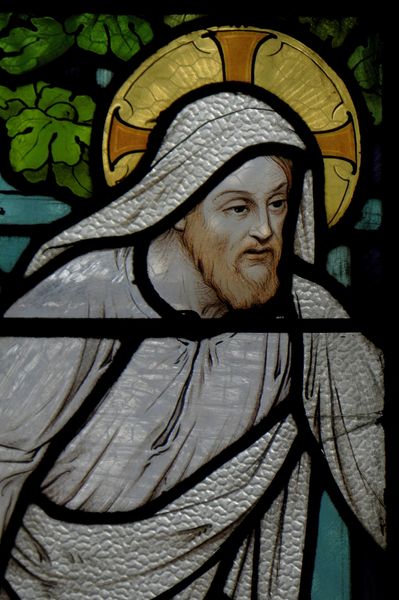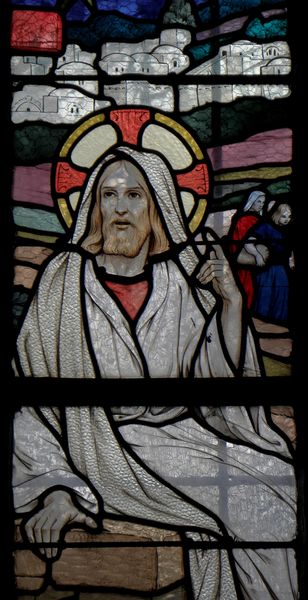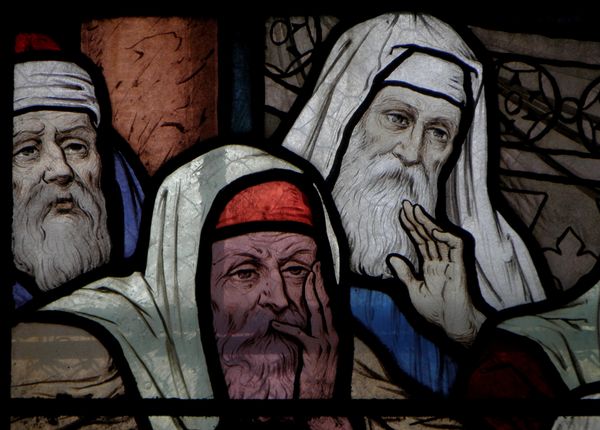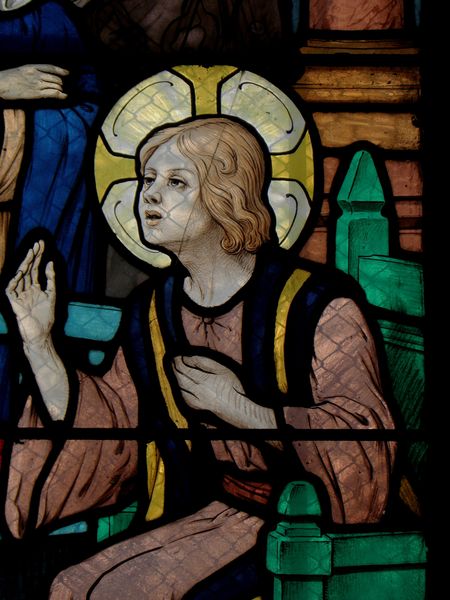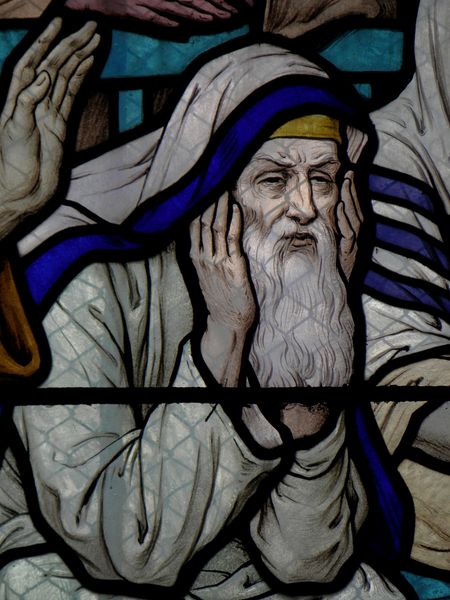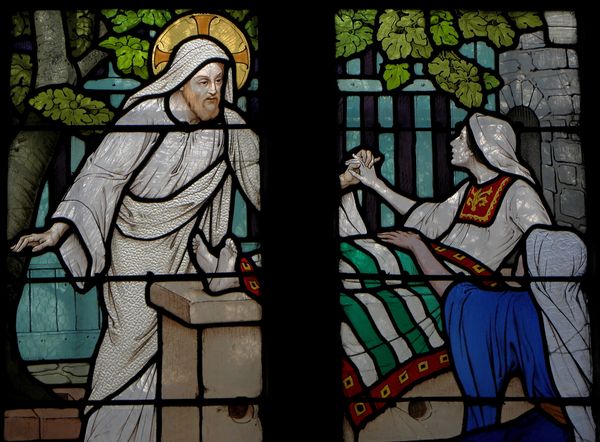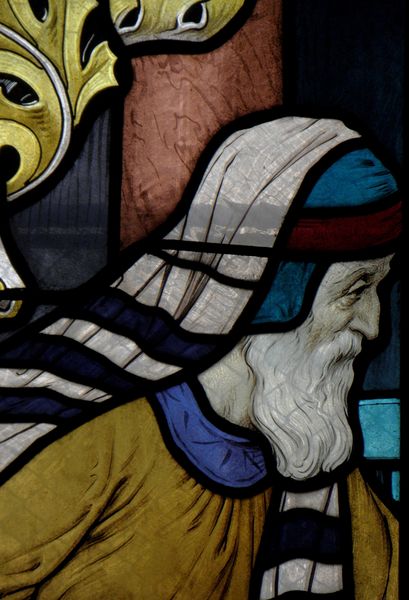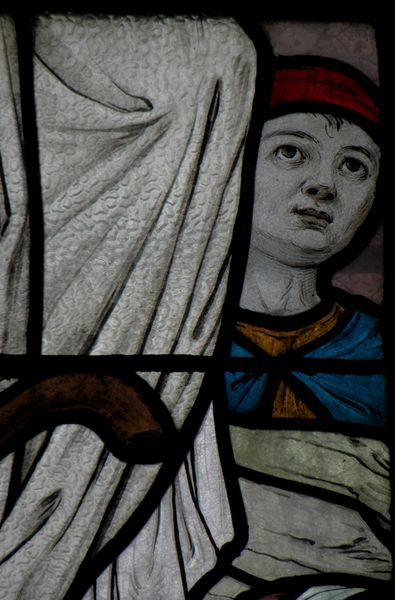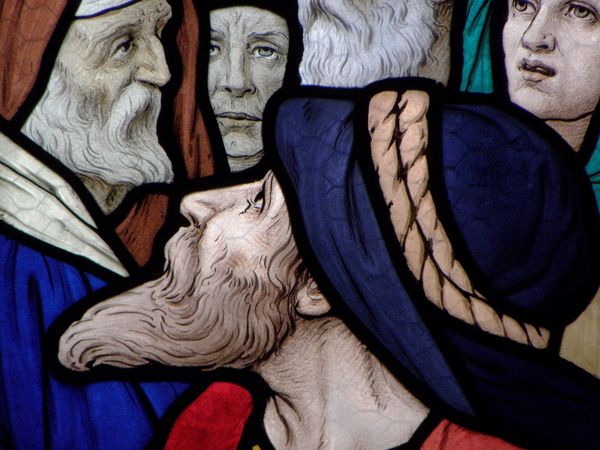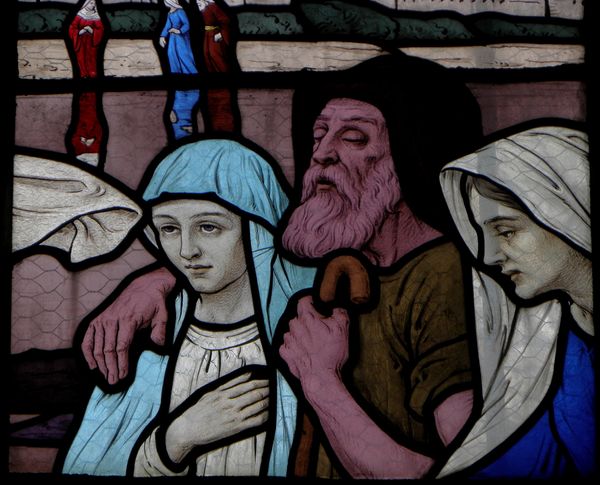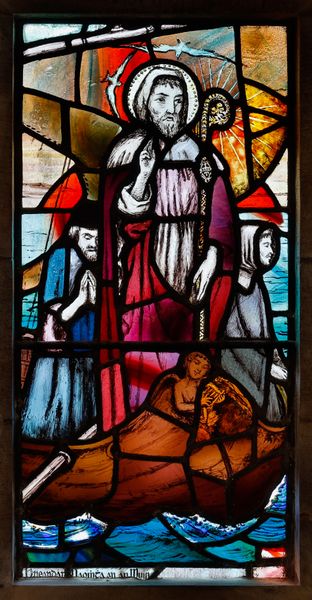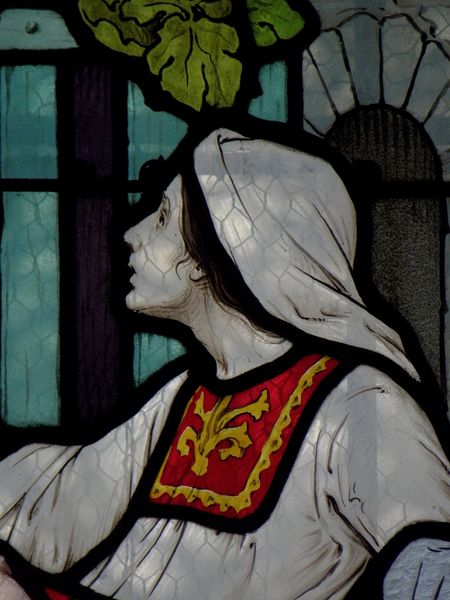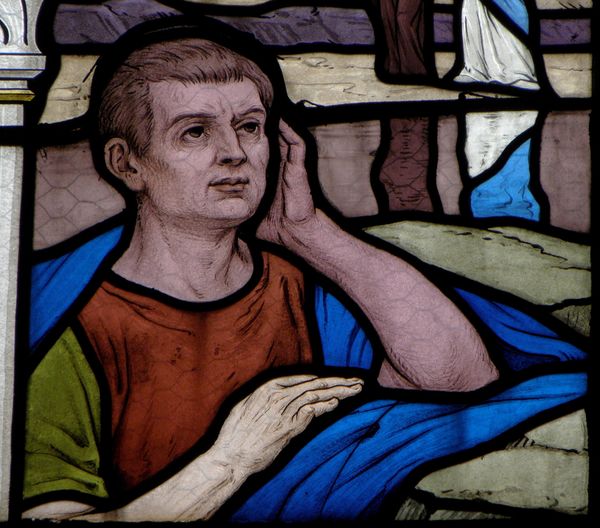
painting, glass, mural
#
portrait
#
public art
#
medieval
#
painting
#
mural art
#
glass
#
mural
#
mural
Copyright: Public domain
Editor: Here we have a detail of Ludovic Alleaume's stained glass mural, "Life of Christ" created in 1919 for the Église Saint-Sulpice de Fougères. The pale colors and rigid lines make it feel, to me, somewhat austere and medieval. What aspects of its cultural context do you find particularly compelling? Curator: Considering this work through a historical lens, I'm struck by its creation just after the First World War. Public art, especially religious art, took on a powerful role in shaping collective memory and reinforcing societal values. What do you make of that raised hand? Is it blessing, or supplication, or something else? Editor: I see it as a gesture of blessing. Knowing the context, I can see how this image would provide comfort after such a brutal war. How would the French public in 1919 receive medieval styled stained glass? Would they see it as old-fashioned? Curator: Not necessarily. The medieval style allowed a return to a perceived period of social stability and faith, while visually it connects the viewers to established religious iconography, lending legitimacy and timelessness to the church's message. It reaffirms tradition in a time of profound societal shift and grief. The location of this piece within a church is key, framing the message for the faithful. Editor: It’s interesting to consider how artistic style and subject matter can both respond to and shape public sentiment. I hadn't considered that the choice of medium here would further establish this cultural message of hope within the traditional institution. Curator: Exactly. By analyzing how institutions use art to speak to social needs and shape values, we can understand so much about a particular historical moment.
Comments
No comments
Be the first to comment and join the conversation on the ultimate creative platform.
